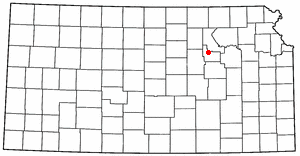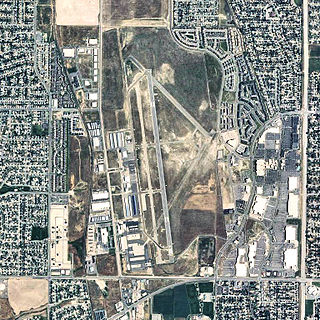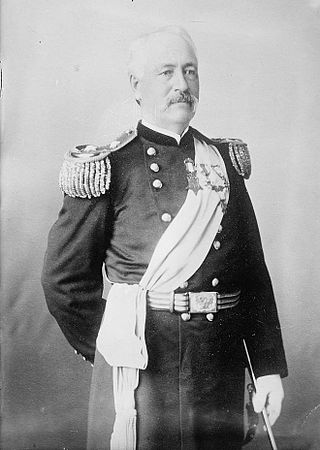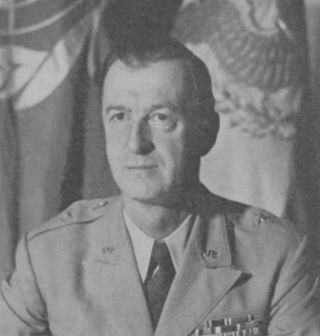
Fort Carson is a United States Army post located directly south of Colorado Springs in El Paso, Pueblo, Fremont, and Huerfano counties, Colorado, United States. The developed portion of Fort Carson is located near the City of Colorado Springs in El Paso County.

Fort Liberty is a military installation of the United States Army in North Carolina, and is one of the largest military installations in the world by population, with around 54,000 military personnel. The military reservation is located within Cumberland and Hoke counties, and borders the towns of Fayetteville, Spring Lake, and Southern Pines.

Fort Bliss is a United States Army post in New Mexico and Texas, with its headquarters in El Paso, Texas. Named in honor of LTC William Bliss (1815–1853), a mathematics professor who was the son-in-law of President Zachary Taylor, Ft. Bliss has an area of about 1,700 square miles (4,400 km2); it is the largest installation in FORSCOM and second-largest in the Army overall. The portion of the post located in El Paso County, Texas, is a census-designated place with a population of 8,591 as of the time of the 2010 census. Fort Bliss provides the largest contiguous tract of restricted airspace in the Continental United States, used for missile and artillery training and testing, and at 992,000 acres boasts the largest maneuver area. The garrison's land area is accounted at 1.12 million acres, ranging to the boundaries of the Lincoln National Forest and White Sands Missile Range in New Mexico. Fort Bliss also includes the Castner Range National Monument.

Fort Riley is a United States Army installation located in North Central Kansas, on the Kansas River, also known as the Kaw, between Junction City and Manhattan. The Fort Riley Military Reservation covers 101,733 acres (41,170 ha) in Geary and Riley counties. The portion of the fort that contains housing development is part of the Fort Riley census-designated place, with a residential population of 7,761 as of the 2010 census. The fort has a daytime population of nearly 25,000. The ZIP Code is 66442.

John Alexander Logan was an American soldier and politician. He served in the Mexican–American War and was a general in the Union Army in the American Civil War. He served the state of Illinois as a state Representative, a U.S. Representative, and a U.S. Senator and was an unsuccessful candidate for Vice President of the United States as James G. Blaine's running mate in the election of 1884. As the 3rd Commander-in-Chief of the Grand Army of the Republic, he is regarded as the most important figure in the movement to recognize Memorial Day as an official holiday.

Fort Benning is a United States Army post near Columbus, Georgia, adjacent to the Alabama–Georgia border. Fort Benning supports more than 120,000 active-duty military, family members, reserve component soldiers, retirees and civilian employees on a daily basis. It is a power projection platform, and possesses the capability to deploy combat-ready forces by air, rail, and highway. Fort Benning is the home of the United States Army Maneuver Center of Excellence, the United States Army Armor School, United States Army Infantry School, the Western Hemisphere Institute for Security Cooperation, elements of the 75th Ranger Regiment, the 1st Security Force Assistance Brigade, and other tenant units.

Fort Leavenworth is a United States Army installation located in Leavenworth County, Kansas, in the city of Leavenworth. Built in 1827, it is the second oldest active United States Army post west of Washington, D.C., and the oldest permanent settlement in Kansas. Fort Leavenworth has been historically known as the "Intellectual Center of the Army."

Fort Devens is a United States Army Reserve military installation in the towns of Ayer and Shirley, in Middlesex County and Harvard in Worcester County in the U.S. state of Massachusetts. Due to extensive environmental contamination it was listed as a superfund site in 1989. Most of the fort's land was sold off in 1996, but the cantonment area of the post was retained by the Army as the Devens Reserve Forces Training Area (RFTA). Fort Devens was reactivated in May 2007, though no units of active Army have been located there. The Devens Range Complex operates on property in Lancaster, south of Route 2, for live-fire training with small arms, machine guns, grenades, and rockets.
Fort Sheridan is a residential neighborhood within the cities of Lake Forest, Highwood, and Highland Park in Lake County, Illinois, United States. It was originally established as Fort Sheridan, an Army post named after Civil War cavalry general Philip Sheridan, to honor his services to Chicago.

Lowry Air Force Base is a former United States Army Air Forces (USAAF) training base during World War II and a United States Air Force (USAF) training base during the Cold War, serving as the initial 1955–1958 site of the U.S. Air Force Academy. It is a U.S. Formerly Used Defense Site (B08CO0505).

South Valley Regional Airport is a public airport located in West Jordan, seven miles (11 km) southwest of Salt Lake City, Utah, United States. Established as a Utah World War II army airfield, it is the primary general aviation airport in the area and is a Utah Army National Guard training base with Apache and Blackhawk helicopters. Leading Edge Aviation is the single fixed-base operator (FBO) onsite; the FBO and Alta Aircraft Maintenance operate maintenance facilities, and the FBO and Utah Helicopter Flight Academy operate flight schools.

Fort Logan National Cemetery is a United States National Cemetery in Denver, Colorado. Fort Logan, a former U.S. Army installation, was named after Union General John A. Logan, commander of US Volunteer forces during the American Civil War. It contains 214 acres (87 ha) and has over 122,000 interments as of 2014. It was listed on the National Register of Historic Places in 2016.

Camp Blanding Joint Training Center is the primary military reservation and training base for the Florida National Guard, both the Florida Army National Guard and certain nonflying activities of the Florida Air National Guard. The installation is located in Clay County, Florida, near the city of Starke. The site measures about 73,000 acres (30,000 ha) and includes Kingsley Lake. It also hosts other Reserve, Army National Guard, Air National Guard, and some Active Component training for the U.S. Armed Forces.

Major General Harry John Collins was a decorated senior United States Army officer who commanded the 42nd "Rainbow" Infantry Division during World War II.

The 13th Infantry Regiment is a United States Army infantry regiment whose battalions are currently tasked as basic training battalions.

Henry Clay Merriam was a United States Army general. He received the United States military's highest decoration, the Medal of Honor, for his actions as a Union officer in command of African American troops during the American Civil War. He later served in various Indian Wars throughout the western United States and commanded the 7th Infantry Regiment. After being promoted to brigadier general, he took on a training and supply role during the Philippine–American War.

Western Technical Training Command was a command of the United States Army Air Forces. It was assigned to the Army Air Forces Training Command, and stationed at Denver, Colorado throughout its existence. It was inactivated on 15 October 1945.

Onslow S. Rolfe was a career officer in the United States Army. He attained the rank of brigadier general during World War II as commander of the Mountain Training Center at Camp Hale, Colorado, and the 71st Infantry Division.

Joseph D. Leitch was a career officer in the United States Army.





















